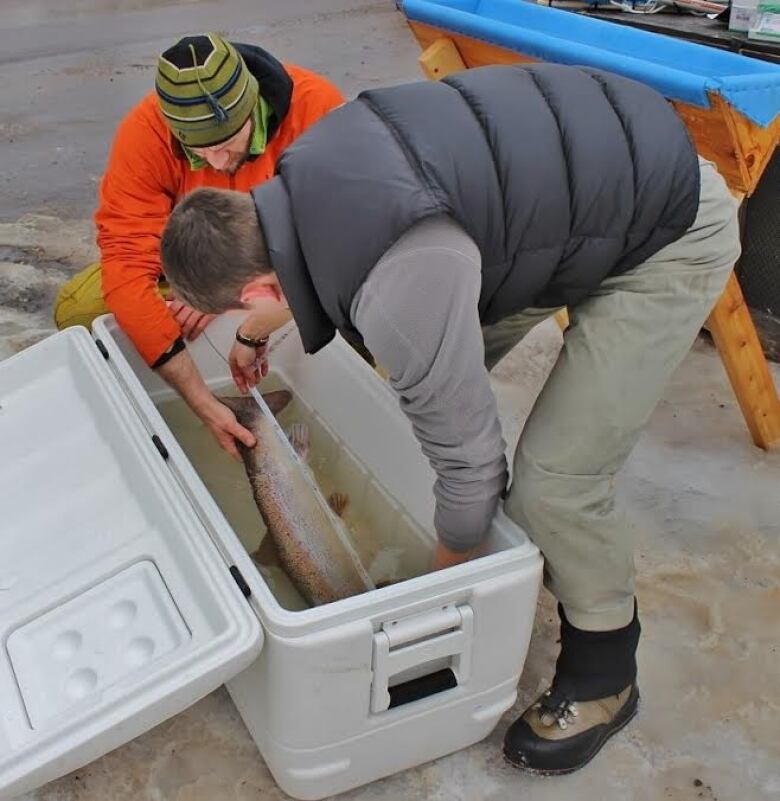Atlantic salmon tracked after spawning in Cape Breton
Dalhousie PhD student Xavier Bordeleau is trying to find out where Bras d'Or Lake salmon go in winter

A PhD student at Dalhousie University is trying to solve the mystery of where some Atlantic salmon go after they spawn.
Xavier Bordeleau is tracking kelts, which are salmon that have already spawned, in two Cape Breton rivers. Unlike Pacific salmon that die after they reproduce, Atlantic salmon have the capacity to spawn again.
However, not much is known about what they do to rebuild their reserves or where they go to do it.
"Their over-winter migration decision is critical for their survival, so what they do next is really important," said Bordeleau.
"Even if their survival rate is quite low, they represent experienced spawners, so they still have a role in population dynamics."
Bordeleau tagged 21 salmon last December in the Baddeck and Middle rivers. Some of the tagged fish remained in the rivers over the winter and some went back to Bras d'Or Lake.
Over the life of the project, Bordeleau is hoping to find out how much the fish stay in Bras d'Or Lake, or if they spend their entire life cycle there.

"Compared to other life stages, we know really little about kelts and especially in a context like the Bras d'Or Lakes," he said. "That's a very special ecological context."
Previous research suggests fish that were in poor shape returned to Bras d'Or Lake to feed, while the healthier fish stayed in the rivers.
None of the tagged kelts went out to sea immediately after spawning.
"They exhibit variable migratory behaviours," Bordeleau said. "For example, we've seen that some individuals actually left the river shortly after spawning, as early as mid-November, while others only left at spring, as late as the end of May.
"So that was quite a change in terms of the strategies of each of those groups of fish."
Bordeleau said he'll continue tracking the fish already fitted with transmitters and plans to tag another 40 salmon later this month.
Bordeleau is working with the Ocean Tracking Network at Dalhousie, the Unama'ki Institute of Natural Resources at Cape Breton University, the Nova Scotia Department of Fisheries and Aquaculture and Fisheries and Oceans Canada on the project.












_(720p).jpg)


 OFFICIAL HD MUSIC VIDEO.jpg)
.jpg)



























































































